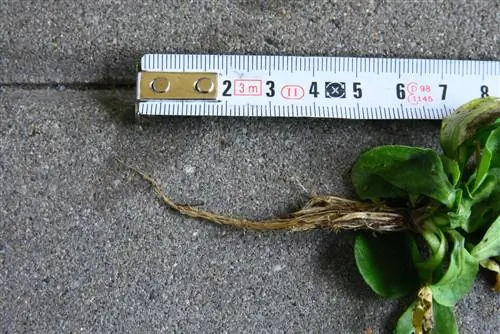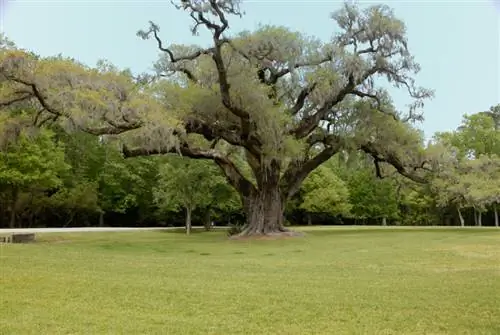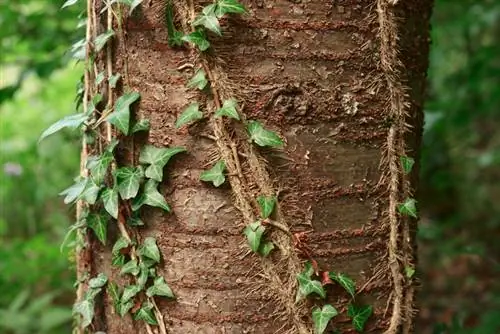- Author admin [email protected].
- Public 2023-12-16 16:46.
- Last modified 2025-01-23 11:22.
There is probably no wild plant that is better known than the daisy. Even children come into contact with the plant and it is a popular ingredient among fans of natural cuisine. In order for the roots to feel comfortable in the garden, certain conditions are necessary.

What does the root of the daisy look like?
The daisy (Bellis perennis) develops a short, vertically growing root rhizome that survives the winter. Surrounded by fibrous and branched fine roots, it ensures the absorption of water and nutrients, similar to lamb's lettuce roots.
This is how daisies grow
Bellis perennis is a herbaceous and perennial plant that develops a short root rhizome. This survives the winter in the ground and sprouts again next spring. It protrudes vertically into the depths and is surrounded by fibrous and branched fine roots, which ensure the absorption of water and nutrients. The outer skin of the root tuber appears beige to dark brown. The root system is reminiscent of lamb's lettuce roots.
Functions worth knowing:
- Frequent mowing is not a problem because of the leaf rosettes lying close to the ground
- Flower baskets align with the sun
- Flowers are closed on rainy days and at night
Daisies in the garden
The native wild herb prefers to grow in full sun conditions on moderately moist soil. It loves nutrient-rich and humus-rich substrates. If the outdoor area offers predominantly shady conditions, the daisy plant does not feel particularly comfortable. Dry and sandy soils affect growth. In the right location, the wild species takes up large areas within a short period of time.
Care
Once established in the meadow, the daisy hardly needs any attention. If the soil tends to be dry, you should ensure regular watering. On nutrient-rich soils, the crop does not require any additional fertilization. If it grows in the same location for several years or the substrate offers few nutrients, occasional application of compost makes sense. Winter protection is not necessary as the wild plant is frost hardy.
Propagate
The short rhizome develops underground runners with which the plant reproduces vegetatively. It also spreads via seeds, which are light germinators. If you don't want to wait until daisies automatically settle on the freshly sown lawn, mix the fine seeds with grass seeds and spread the mixture widely over the area.
Harvest
Bellis perennis provides edible flowers and leaves. The rosette leaves remain in winter, so you can harvest the plant all year round. The green leaves that sprout in spring are particularly tasty and tender. It has a slightly sour nuance and the taste is reminiscent of mild sorrel. The flowers taste nutty and provide an aesthetic ingredient for salads.
Breeding forms
In the trade, cultivated forms of daisies are often available that come from other species and develop similar flower shapes. The blue daisy is becoming increasingly popular. Behind this daisy family with the blue-violet ray flowers is the species Brachyscome iberidifolia. If you want to be sure that it is actually the well-known daisy-cat, you should pay attention to the species name. A common cultivated form is the red-flowering variant 'Rob Roy'.






